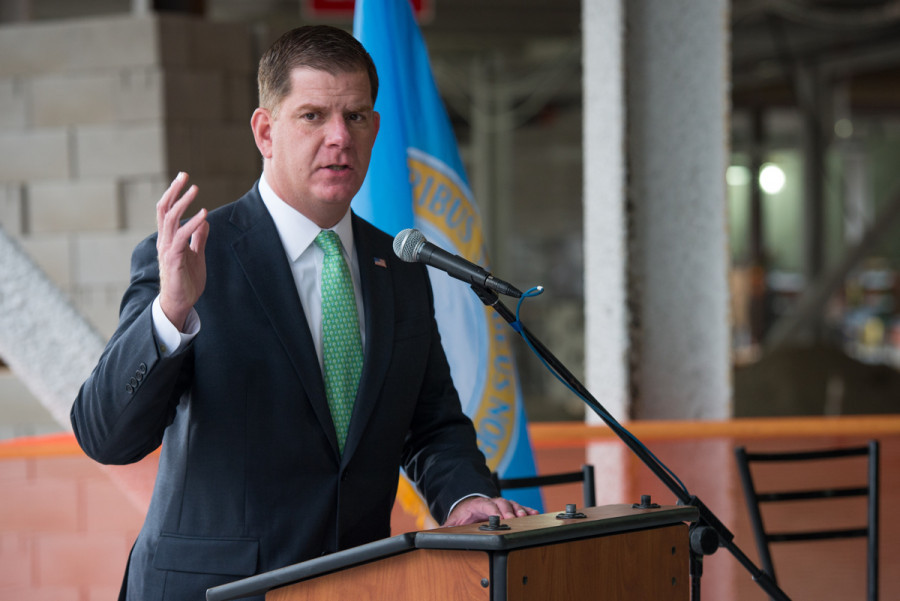Marty Walsh Says Boston Will Fund Police Body Cameras
The city is still working out the implementation strategy and costs of the program for the Boston Police Department.

Photo via Mayor’s Office/Jeremiah Robinson
Mayor Marty Walsh pledged to fund body cameras for the Boston Police Department on Monday, and the force could be outfitted with the devices by the end of the calendar year, the Boston Globe reports.
Funding details are still up in the air, but Police Superintendent John Daley said the 1,500-camera program will cost up to $7 million to implement and $25 million after five years, according to the Boston Herald.
Those who support the devices say recording police interactions bolsters accountability amid concerns over the use of excessive force. On the other hand, some officers argue the cameras limit their ability to use discretion on the job: “You know, a cop gives someone, let’s say, a break for doing something. Now it’s on camera and there is liability there,” Police Commissioner William Evans told the Herald. He did indicate that the BPD was generally in favor, saying, “From talking to officers out there, they’re on board.”
A preliminary analysis of BPD’s body camera pilot program found the devices “may generate small benefits to the civility of police-citizen” interactions. Researchers at Northeastern University also said in their analysis that the cameras led to a statistically significant decline in complaints filed against officers. Ultimately, 12 fewer complaints were filed against officers equipped with the body cameras over the course of the year-long pilot.
In a January press release, the police department noted a four-year downward trend in citizen complaints against officers in Boston. Since 2013, complaints have declined by 41 percent, and excessive force complaints have gone down by 54 percent.
Advocates for the body cameras include City Council president Andrea Campbell, who told the Globe that the city’s leaders are generally on the same page about the devices, and said the question now is one of funding and process: “I think it’s figuring out now how do we get there? … My hope is to continue the conversation.”


